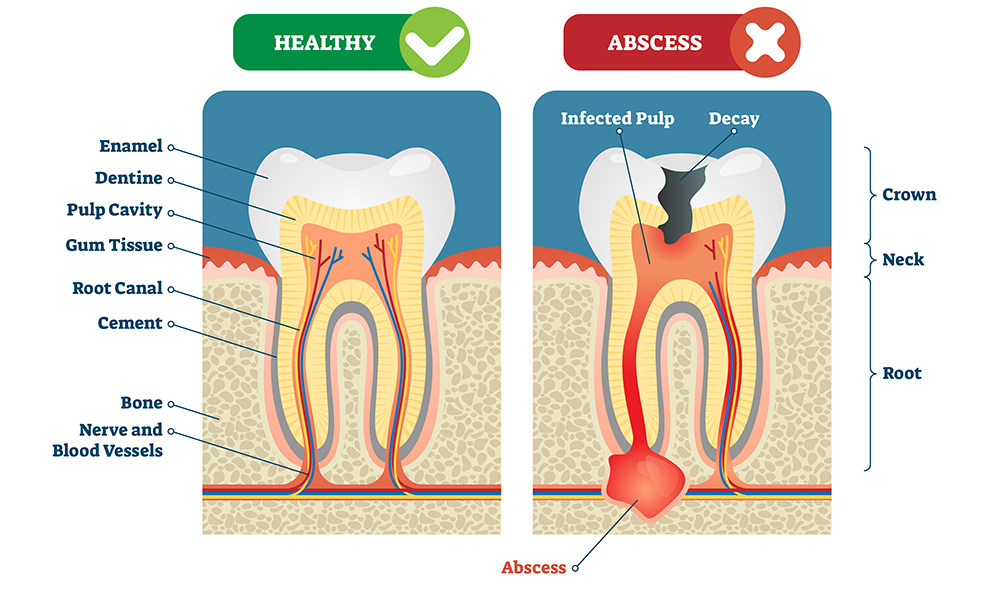What Exactly Is
Dental Surgery?
Root canal therapy is a comfortable and pain-free procedure. After treatment, the tooth remains attached to the bone, functioning like a natural tooth. While the inner pulp is removed, a crown may be recommended to protect the tooth from fractures and restore its appearance.
In some cases, root canal therapy may be performed on an otherwise healthy tooth to address sensitivity issues or prepare it as a support for a bridge. This approach helps preserve your natural tooth, which is healthier and more cost-effective than extraction and replacement.

Non-Surgical Root Canal Retreatment
Retreatment may be necessary if bacteria re-enter a previously treated tooth, often due to decay or untreated canal areas. Symptoms such as swelling, pain during chewing, or even x-ray findings may indicate the need for retreatment.
Apicoectomy
When inflammation or infection persists around the tip of a tooth root after root canal therapy, an Apicoectomy may be required. This surgical procedure involves removing the root tip and surrounding infected tissue, followed by sealing the root end. Stitches are placed to secure the gum tissue until healing occurs, and within a few months, the bone around the area fully heals.
Don’t Delay Your Dental Health
If you’ve been hesitant about root canal treatment, now is the time to act. Delaying treatment could result in the loss of your tooth, which is irreversible. Book your appointment today and save your natural tooth—it’s worth it!


Don’t Delay Your Dental Health
If you’ve been hesitant about root canal treatment, now is the time to act. Delaying treatment could result in the loss of your tooth, which is irreversible. Book your appointment today and save your natural tooth—it’s worth it!
What Exactly Is
Dental Surgery?
Root canal therapy is a comfortable and pain-free procedure. After treatment, the tooth remains attached to the bone, functioning like a natural tooth. While the inner pulp is removed, a crown may be recommended to protect the tooth from fractures and restore its appearance.
In some cases, root canal therapy may be performed on an otherwise healthy tooth to address sensitivity issues or prepare it as a support for a bridge. This approach helps preserve your natural tooth, which is healthier and more cost-effective than extraction and replacement.

Non-Surgical Root Canal Retreatment
Retreatment may be necessary if bacteria re-enter a previously treated tooth, often due to decay or untreated canal areas. Symptoms such as swelling, pain during chewing, or even x-ray findings may indicate the need for retreatment.
Apicoectomy
When inflammation or infection persists around the tip of a tooth root after root canal therapy, an Apicoectomy may be required. This surgical procedure involves removing the root tip and surrounding infected tissue, followed by sealing the root end. Stitches are placed to secure the gum tissue until healing occurs, and within a few months, the bone around the area fully heals.
Don’t Delay Your Dental Health
If you’ve been hesitant about root canal treatment, now is the time to act. Delaying treatment could result in the loss of your tooth, which is irreversible. Book your appointment today and save your natural tooth—it’s worth it!


Don’t Delay Your Dental Health
If you’ve been hesitant about root canal treatment, now is the time to act. Delaying treatment could result in the loss of your tooth, which is irreversible. Book your appointment today and save your natural tooth—it’s worth it!
